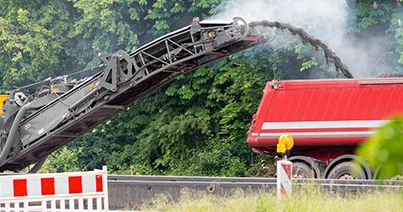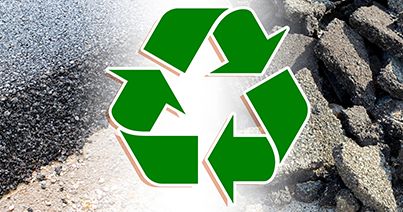
Tooling solutions are constantly being pushed to their limits against some of the toughest materials on the planet. Not only is wear and reduction of tool life a major concern, but so is the cost associated with production time. To combat these challenges, Polycrystalline Diamond (PCD) has emerged as a clear winner when it comes to durability and high performance when machining a variety of materials.
Whether you're trenching through abrasive rock in mining or grinding asphalt in road milling, PCD-tipped tools can get the job done. They also offer a level of sustainability for the environment by being able to be reconditioned to a like-new condition, reducing the need for replacement tooling and minimizing waste.
Why is PCD Different?
Unlike natural diamonds, which are single crystals that can fracture under stress, PCD is a matrix of countless tiny diamond grains fused together. This matrix eliminates weak points, giving PCD its unique toughness.
Diamond powder is essentially exposed to extreme pressures exceeding 5 gigapascals and temperatures over 1,400°C. A metallic binder, typically cobalt, is introduced to facilitate sintering, allowing the diamond grains to bond without melting. The result is a solid, ultra-hard disc of diamond composite, often bonded to a tungsten carbide substrate for added strength and ease of mounting.
PCD in Mining
In mining, tool wear is a constant battle. Traditional tungsten carbide tools, while tough, degrade quickly in abrasive rock formations. PCD-tipped tools, however, maintain their cutting edge far longer. PCD picks, for example, can slice through rock seams with minimal degradation, even when encountering quartz-rich strata. In hard rock mining, PCD inserts in roof bits allow for faster penetration rates and improved borehole quality.


PCD in Road Milling
Road milling is another area where PCD excels. Milling machines equipped with PCD-tipped teeth can cut through asphalt and concrete with remarkable efficiency. The sharpness of the diamond edge ensures a cleaner cut, which translates to smoother surfaces and better bonding for new pavement layers.
Unlike traditional carbide tools that dull quickly and require frequent replacement, PCD tools can last much longer depending on the application. This durability is especially valuable in urban environments where minimizing noise, dust and disruption is critical.
PCD also handles the embedded aggregates in concrete such as granite or basalt. These hard materials often cause chipping in carbide tools, but PCD’s superior hardness and fracture resistance keep it cutting.


Maximizing Uptime with PCD
One of the most significant advantages of PCD tooling is its ability to extend operational time by drastically reducing the frequency of tool changes and maintenance. Thanks to its exceptional wear resistance and durability, PCD tools require less frequent reconditioning, which minimizes machine downtime and boosts overall productivity. This translates into fewer interruptions, lower maintenance costs, and more consistent performance in demanding earth-cutting environments.
Conclusion
As infrastructure demands grow and mineral resources become harder to access, the need for efficient, durable cutting tools will only increase. PCD tooling solutions are an excellent example of how material science and engineering come together to solve real-world challenges. Its unique combination of hardness, toughness and thermal stability makes it the material of choice for the most demanding earth cutting tasks.
Related Articles
- Road Rehabilitation Applications and Tooling SolutionsMaintaining and improving infrastructure is always a constant. Here are five key applications for road rehabilitation, why it's important and the tools involved.Maintaining and improving infrastructure is always a constant. Here are five key applications for road rehabilitation, why it's important and the tools involved.
- Key Tips and Solutions for Trenching in ConstructionTrenching is a fundamental technique that plays a crucial role in building and infrastructure development. Here are some helpful tips to ensure safe and efficient trenching on your construction site.Trenching is a fundamental technique that plays a crucial role in building and infrastructure development. Here are some helpful tips to ensure safe and efficient trenching on your construction site.
- Safety Tips in Road Rehabilitation Projects Road rehabilitation is essential for maintaining and improving our transportation infrastructure. Discover key safety tips and best practices to ensure successful and secure projects.Road rehabilitation is essential for maintaining and improving our transportation infrastructure. Discover key safety tips and best practices to ensure successful and secure projects.
- Revolutionizing Road Construction: Embracing Renewable MaterialsBy incorporating an ESG strategy in road rehabilitation we can overcome harmful environmental challenges and build a greener future. Learn more from Kennametal.By incorporating an ESG strategy in road rehabilitation we can overcome harmful environmental challenges and build a greener future. Learn more from Kennametal.



